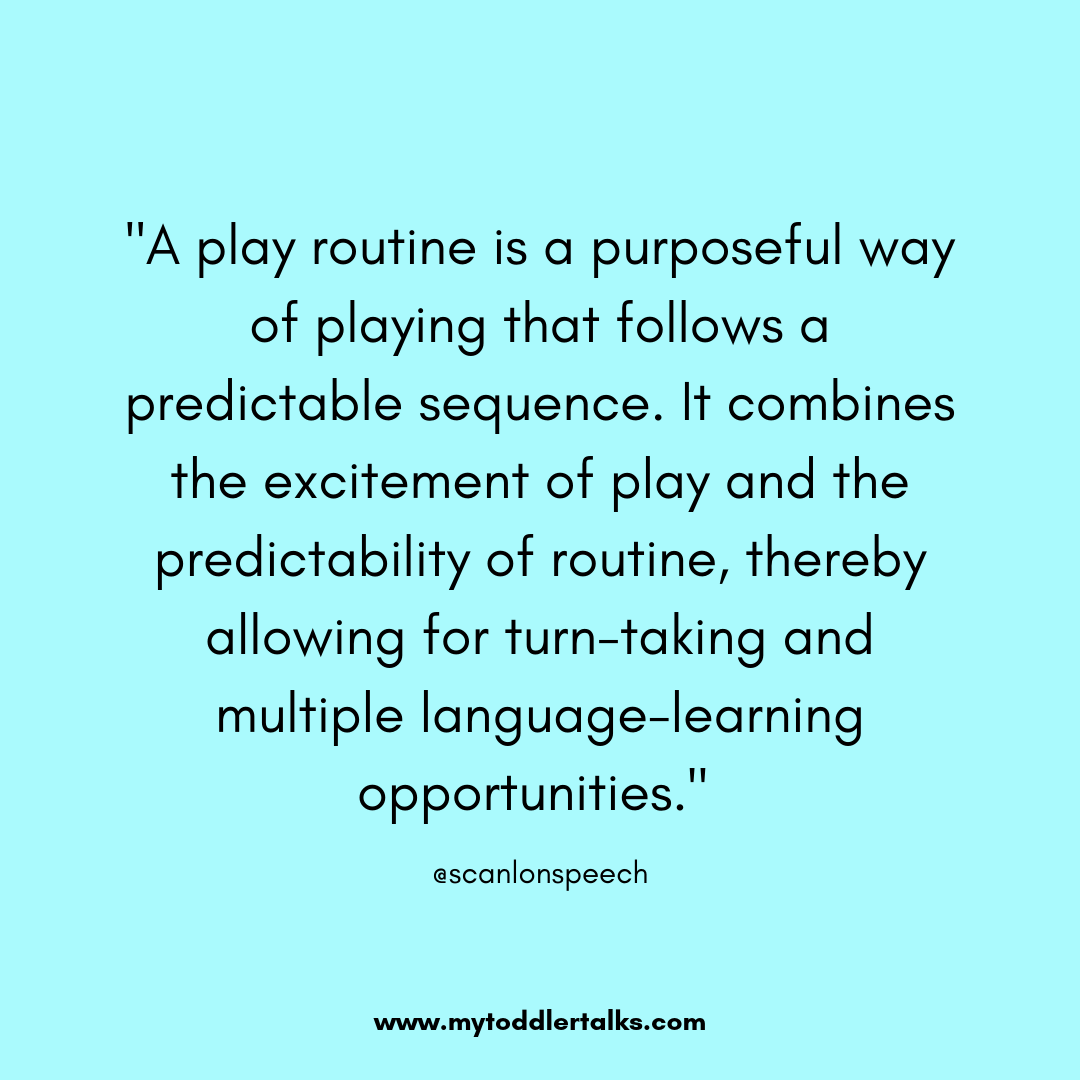What is a Play Routine?
What is a Play Routine?
What is a play routine
I introduce the concept of a play routine in my workbook, My Toddler Talks.
My Toddler Talks offers the reader a wealth of easy to understand information, techniques, tracking charts, goals as well as 25 entertaining play routines that do not involve too many novel toys or materials. Most families will most likely have the items in their household. These play routines should appeal to clinicians too who are attempting to go bagless.
So, what is a play routine?
How are play routines different from play activities?
How do play routines facilitate language development in children?
A play routine is a purposeful way of playing and interacting with a child that follows a simple sequence. It involves predictability, repetition, and of course, lots of fun! Many toddlers like knowing what to expect because it gives them a sense of comfort, security, and control. When toddlers can anticipate what comes next, they are more likely to socially interact and communicate.
Having a routine implies that there is some repetition. Repetition allows for practice and multiple opportunities to acquire a new skill. Just like when we are learning something new (like playing the piano) we have to continually practice in order to do better; children who are not talking need that same preparation.
Also, repetition is not boring to toddlers. In fact, many of them love it! Have you ever noticed that your child likes to read the same book over and over again? Or, that he likes to play with the same toy all the time?
One of my son’s (26 months old) favorite play routines is to load up his large Tonka truck with random toys.
When Shane repeatedly loads up his truck with various toys and then dumps them onto the ground, I can use this play routine to model and elicit certain words. I can label the various toys he is loading into the dumpster of the truck, talk about his actions (technique known as parallel talk) , or I can expand and extend his one or two word phrases into longer utterances (techniques known as expansions and extensions). I can also give him choices - do you want to load the elephant or the horse into the truck? - to elicit a particular word from him. There are SO many ways to model and elicit language during a simple, favorite play routine! It doesn't have to be complicated to be fun!
A play routine is similar to a play activity because they are fun and interactive and allow for bonding, creativity, stimulation, and problem solving. However, a play routine is different than a play activity. Play activities do not have to intentionally follow a predictable order. They are not necessarily designed to trigger something to happen. A play routine, unlike a play activity, has been constructed to embed the learning through its actual structure.
In My Toddler Talks, I teach my reader how to elicit and model communication by participating in a play routine. Each of my 25 play routines has a beginning, a middle and an end. The beginning is marked by something that triggers the child to think, “We’re starting something new and exciting.” The middle is the real heart of the play and the longest part of the routine. This is also where I challenge the child a bit because he is most likely warmed up and fully engaged in the play. At the end, the child is alerted that the play is soon ending based on a predictable action, word, or song (e.g. Mommy is starting to sing the Clean Up song or Daddy is putting the baby doll to sleep). He has time to process that it’s time to clean up and get ready for the next event (e.g. picking his older brother up from school). It is in these play routines where I embed language learning techniques.
Too often adults try to target too many new things all at once. This is overwhelming for both the child and the adult. The beauty about play routines is that the learning is facilitated in an organized fashion. And, once you become familiar you can create your own play routines with your child!
Here's a sample of a fun play routine from My Toddler Talks, please click the image below OR see my FREE downloadable sample in the special resources section of this website:
How do you use play or routines to facilitate learning?
If you have enjoyed reading My Toddler Talks, I would REALLY appreciate, if you could help spread the word about my book. Please tell your friends, write a kind review on Amazon, click the Facebook like button on landing page, or personally give me your feedback. I would be thrilled to hear from my readers. YOU are the reason why I devote so much time to perfecting my craft. Thank you!



